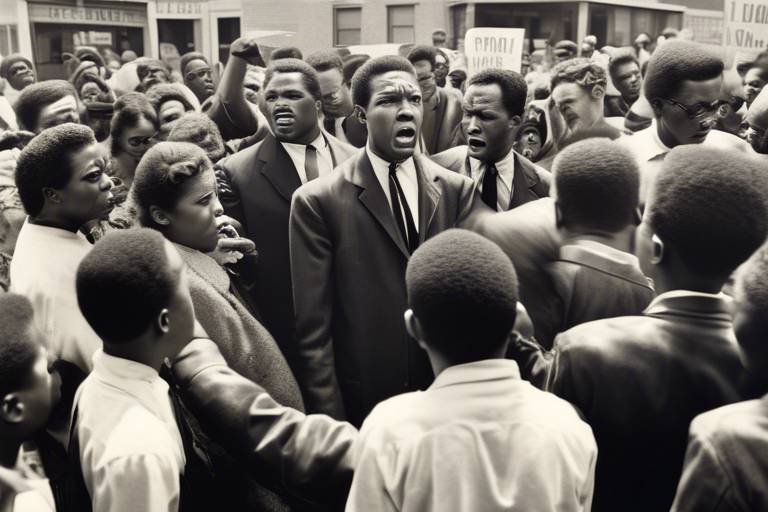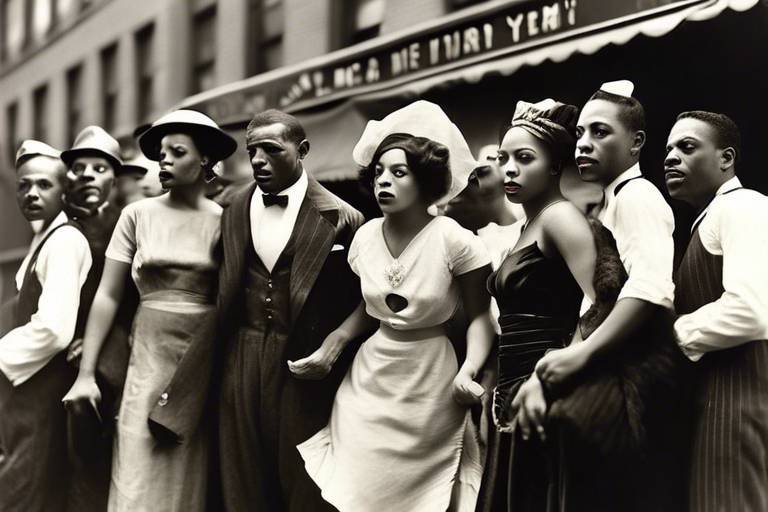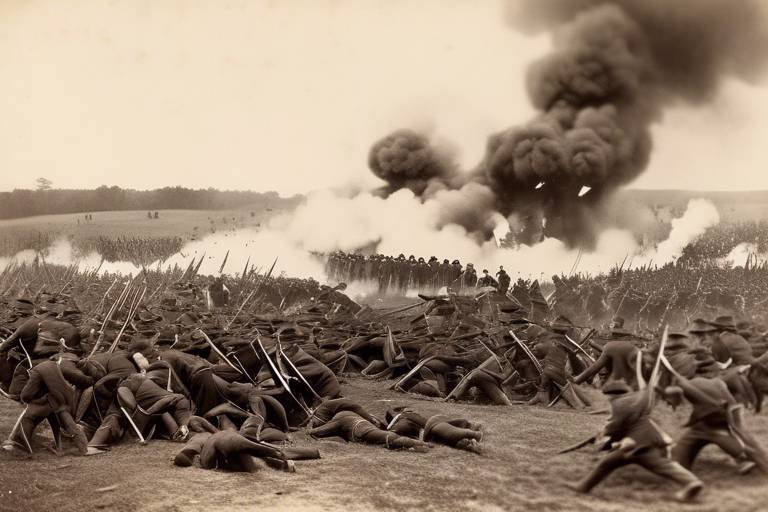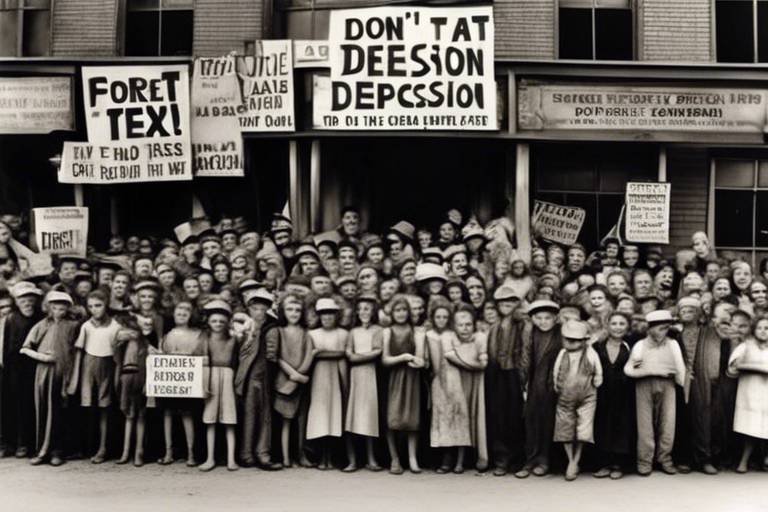The Role of Women in Ancient Societies
Women in ancient societies played diverse and significant roles that shaped the fabric of their respective civilizations. From the majestic lands of Ancient Egypt to the bustling streets of Ancient Rome, women contributed in various spheres of life, leaving a lasting impact on history. Let's delve into the intriguing world of women in ancient societies and uncover the complexities of their roles and status.

Women in Ancient Egypt
Ancient Egypt was a civilization where women held a unique position in society. While they were not considered equal to men, they enjoyed more rights and freedoms compared to women in other ancient societies. Women in ancient Egypt had diverse roles, encompassing various aspects of life.
In the family structure, women played crucial roles as mothers, wives, and caretakers. They were responsible for managing the household, raising children, and ensuring the well-being of the family. Women in ancient Egypt had a significant influence on the upbringing of children and the overall harmony of the household.
Moreover, women in ancient Egypt had a notable presence in religious practices. They could serve as priestesses in temples, participate in religious ceremonies, and even hold positions of religious authority. Some women were devoted to specific goddesses, reflecting the spiritual significance of women in ancient Egyptian culture.
When it comes to politics, women in ancient Egypt had limited participation in official governance. However, some women, particularly those from the royal family, wielded considerable power and influence. Queens like Cleopatra VII and Hatshepsut are renowned for their political acumen and leadership skills.
Overall, women in ancient Egypt occupied a multifaceted role in society, contributing to various spheres of life with their skills, knowledge, and determination. Their status and rights set them apart from women in many other ancient civilizations, showcasing a unique and progressive approach to gender dynamics.

Women in Ancient Greece
Ancient Greece, known for its rich history and cultural achievements, also provides valuable insights into the lives of women in antiquity. In ancient Greek society, women occupied a primarily domestic role, centered around managing the household and raising children. While men were active participants in public life, engaging in politics, philosophy, and warfare, women's sphere of influence was largely confined to the home.
Marriage was a significant aspect of a woman's life in ancient Greece, as it was seen as a means of securing alliances between families and ensuring the continuation of the household. Women were expected to be faithful wives and dedicated mothers, responsible for the upbringing of children and the management of domestic affairs.
Education for women in ancient Greece was limited, with most girls receiving basic instruction in household tasks and childcare rather than formal schooling. While some affluent women may have had access to private tutors for music or dance, intellectual pursuits were generally reserved for men.
Despite their restricted roles, some women in ancient Greece did achieve prominence in areas such as poetry, music, and religious rituals. Priestesses played a significant role in religious ceremonies, serving as intermediaries between mortals and the gods.
However, it is essential to note that these examples of exceptional women were the exception rather than the norm in ancient Greek society. The overall status of women was characterized by restrictions on their freedom and limited opportunities for social and political participation.

Women in Ancient Rome
Women in Ancient Rome played multifaceted roles within the societal framework of the Roman Empire. While often overshadowed by their male counterparts, women in ancient Rome held significant influence in various aspects of life. From the confines of the household to the corridors of power, Roman women navigated a complex web of social expectations and legal constraints.
Within the family unit, Roman women were primarily responsible for managing the household affairs, including overseeing domestic tasks, child-rearing, and ensuring the well-being of the family. Despite their pivotal role in maintaining the stability of the household, women had limited legal rights and were subject to the authority of male family members.
Marriage held a central position in the lives of Roman women, serving not only as a social contract but also as a means of securing alliances and perpetuating the family line. The institution of marriage imposed certain expectations on women, dictating their behavior and social standing within the community.
While women in ancient Rome had some degree of influence in religious practices, particularly in household rituals and ceremonies, their participation in public religious roles was restricted. The cult of Vesta, presided over by the Vestal Virgins, offered a rare avenue for women to hold positions of religious authority.
Despite the limitations imposed by societal norms and legal restrictions, some Roman women managed to exert significant influence in political spheres. Women from elite families, such as the mothers of emperors or influential wives, often wielded behind-the-scenes power and played crucial roles in shaping political decisions.
Education for women in ancient Rome was primarily focused on domestic skills and moral virtues, with limited opportunities for formal education beyond basic literacy. While some privileged women received private tutoring, the educational curriculum for women was designed to reinforce traditional gender roles.
Overall, the status of women in ancient Rome was a complex interplay of social expectations, legal constraints, and individual agency. Despite facing significant barriers to full participation in public life, Roman women found ways to assert their influence and shape the course of history in subtle yet impactful ways.

Women in Mesopotamia
Women in Mesopotamia played vital roles in the ancient civilizations of Sumer, Akkad, and Babylon. These societies recognized the importance of women in various aspects of life, including the economy, religion, and governance. In Mesopotamia, women were actively involved in agricultural activities, such as farming and weaving, contributing significantly to the economy of their communities. Additionally, women in Mesopotamia held positions of power and influence in religious practices, often serving as priestesses in temples dedicated to various deities.
Moreover, women in Mesopotamia had some legal rights, such as the ability to own property and engage in business transactions. While men typically held political power in these ancient societies, there are instances of women exerting influence behind the scenes, shaping political decisions and strategies. The role of women in Mesopotamia was multifaceted, encompassing responsibilities within the family, community, and larger social structures.

Women in Ancient China
Women in ancient China played crucial roles within the family structure and societal expectations. In traditional Chinese society, women were primarily responsible for managing the household, raising children, and supporting their husbands. Their main role was to maintain harmony within the family and uphold Confucian values of filial piety and obedience.
Education for women in ancient China was limited, with emphasis placed on domestic skills and moral virtues rather than academic pursuits. While some elite women received education in literature and music, the majority were expected to focus on household duties and childcare.
Marriage was a significant event in a woman's life in ancient China, often arranged by families for economic or social reasons. Women were expected to be obedient to their husbands and in-laws, contributing to the continuity of the family lineage.
Confucianism, a dominant philosophical and ethical system in ancient China, reinforced traditional gender roles and hierarchical relationships within society. Women were expected to embody the virtues of modesty, humility, and self-sacrifice, aligning with Confucian ideals of proper conduct.
Despite these societal norms, some women in ancient China rose to prominence through their exceptional talents or connections. Legendary figures like Mulan and Empress Wu Zetian challenged traditional gender roles and made significant contributions to Chinese history and culture.
Overall, the status of women in ancient China was complex, influenced by cultural beliefs, social norms, and historical developments. While women were often marginalized in public life, their roles within the family and community were vital for the stability and prosperity of Chinese society.

Women in the Indus Valley Civilization
Women in the Indus Valley Civilization played significant roles in various aspects of society, contributing to the flourishing ancient civilization in the region. Archaeological evidence suggests that women in the Indus Valley Civilization were involved in economic activities such as agriculture, trade, and craft production. They were skilled artisans, creating pottery, jewelry, and textiles that were traded within and beyond the civilization's borders. These economic contributions indicate that women held important positions in the economic structure of the society.
Moreover, women in the Indus Valley Civilization were likely involved in religious practices and rituals. The presence of female figurines and symbols associated with fertility and motherhood suggests that women played a central role in religious ceremonies and beliefs. Their participation in religious activities highlights the spiritual significance and reverence accorded to women in the ancient Indus Valley society.
Additionally, women in the Indus Valley Civilization are believed to have had a degree of social equality compared to some other ancient societies. The layout of the cities, with well-planned streets and drainage systems, indicates a level of urban planning and social organization that may have provided women with opportunities for social interaction and community engagement. This suggests a society where women had a voice and agency in communal affairs.
While the exact extent of women's political participation in the governance of the Indus Valley Civilization remains unclear, the presence of female figurines in administrative contexts and seals suggests that women may have had roles in the political administration of the society. These artifacts hint at the possibility of women holding positions of authority or influence in the governance structure, indicating a more nuanced understanding of gender dynamics in the ancient civilization.

Women in Mesoamerica
Women in Mesoamerica played integral roles in the ancient civilizations of the Maya and Aztec. These societies valued the contributions of women in various aspects of life, including religion, politics, and daily activities. In Mesoamerican cultures, women often held positions of power and influence, serving as priestesses, rulers, and even warriors in some cases. Their roles were diverse and multifaceted, reflecting the complexity of these civilizations.
One notable aspect of women's roles in Mesoamerica was their participation in religious rituals and ceremonies. Women served as priestesses and played key roles in religious practices, offering sacrifices, conducting ceremonies, and maintaining spiritual traditions. Their connection to the divine was highly respected, and they often held significant influence within religious institutions.
In addition to their religious roles, women in Mesoamerica were also active participants in political life. Some women held positions of authority and leadership, exerting influence in decision-making processes and governance. Their involvement in politics varied across different Mesoamerican societies, but overall, women were not excluded from positions of power based on gender.
Furthermore, women in Mesoamerica were essential contributors to the economic activities of their societies. They engaged in various occupations, such as farming, weaving, and trading, contributing to the economic prosperity of their communities. Women's labor was highly valued, and their skills were crucial for the functioning of Mesoamerican economies.
Overall, women in Mesoamerica played diverse and significant roles in their societies, contributing to various aspects of life including religion, politics, and the economy. Their influence and contributions were integral to the functioning of these complex civilizations, highlighting the importance of gender equality and the recognition of women's capabilities.

Women in Ancient Persia
In ancient Persia, women held a unique position in society that was influenced by cultural, religious, and political factors. Persian women enjoyed more rights and freedoms compared to their counterparts in other ancient civilizations. They were actively involved in various aspects of society, including the economy, education, and even politics.
One notable aspect of women in ancient Persia was their participation in the economy. Women engaged in trade, agriculture, and craftsmanship, contributing significantly to the economic prosperity of the Persian Empire. Their roles were not limited to domestic duties but extended to entrepreneurial endeavors and financial decision-making.
Education was another area where Persian women had opportunities for advancement. They had access to formal education and were encouraged to pursue knowledge in various fields such as literature, art, and philosophy. This emphasis on education empowered women to take on leadership roles and contribute to intellectual discourse.
The influence of Zoroastrianism, the predominant religion in ancient Persia, also played a significant role in shaping gender relations. The teachings of Zoroastrianism emphasized equality between men and women, promoting mutual respect and cooperation in all aspects of life. This ideology contributed to a more balanced and harmonious society where women were valued for their contributions.
Moreover, women in ancient Persia had the opportunity to participate in decision-making processes, especially in matters concerning the family and community. Their voices were heard in discussions on governance, social issues, and religious practices, highlighting their importance in shaping the fabric of Persian society.
Overall, the status and roles of women in ancient Persia reflected a society that valued their contributions and recognized their capabilities beyond traditional gender roles. The combination of cultural openness, religious teachings, and political structures created a conducive environment for women to thrive and actively participate in various spheres of life.

Comparative Analysis of Women's Roles
When we delve into the comparative analysis of women's roles in ancient societies, we uncover a tapestry of diverse experiences and expectations shaped by the unique cultural, religious, and political landscapes of each civilization. Across ancient Egypt, Greece, Rome, Mesopotamia, China, the Indus Valley, Mesoamerica, and Persia, women played multifaceted roles that reflected the values and norms of their respective societies.
In ancient Egypt, women enjoyed relatively high status compared to other ancient civilizations, with some even holding positions of power and influence. They played crucial roles in the family as mothers and wives, while also participating in religious ceremonies and rituals. The concept of Ma'at, representing harmony and balance, underscored the importance of women in maintaining order in society.
On the other hand, in ancient Greece, women's lives were largely confined to the domestic sphere, where their primary roles revolved around managing the household and raising children. Education was limited for women, and their participation in public life was minimal, with few exceptions like the poet Sappho who gained renown for her literary contributions.
Ancient Rome saw a complex interplay of women's rights and responsibilities, with some women enjoying legal rights and property ownership while others were subject to the authority of male relatives. Women in Rome could exert influence in areas such as religion and politics, with notable figures like Livia, the wife of Emperor Augustus, wielding significant power behind the scenes.
In Mesopotamia, women in civilizations like Sumer, Akkad, and Babylon actively participated in the economy through trade and business ventures. They also held important roles in religious practices, with priestesses playing key roles in connecting communities with the divine. The Code of Hammurabi provided some legal protections for women's rights in matters such as marriage and property ownership.
Turning to ancient China, women's roles were heavily influenced by Confucian ideals that emphasized filial piety and the subordination of women to men. Despite these constraints, some women in China rose to prominence as poets, scholars, and political figures, challenging traditional gender norms and expectations.
The ancient Indus Valley Civilization offers intriguing insights into gender dynamics, with archaeological evidence suggesting a relatively egalitarian society where women engaged in trade, craft production, and agricultural activities. The presence of female figurines and seals indicates the importance of women in economic and social spheres.
In Mesoamerica, women in civilizations like the Maya and Aztec held diverse roles ranging from priestesses and rulers to artisans and farmers. The complex social structures of these societies allowed for women to wield power and influence in religious ceremonies, political decision-making, and daily life within their communities.
Ancient Persia showcased a blend of cultural influences, with women enjoying legal rights and participation in economic activities. The teachings of Zoroastrianism promoted gender equality to some extent, with women like Queen Atossa playing pivotal roles in shaping Persian history and culture.
Through a comparative lens, we can discern common themes such as the importance of women in family life, their contributions to religious practices, and occasional instances of women breaking societal norms to achieve remarkable feats. Despite variations in the degree of freedom and agency afforded to women across ancient societies, the resilience and resourcefulness of women in navigating these complex social structures remain evident.
Frequently Asked Questions
- What were the main roles of women in ancient societies?
Women in ancient societies played diverse roles depending on the culture and time period. They were often responsible for managing the household, raising children, and sometimes engaging in economic activities such as weaving or farming.
- Did women in ancient civilizations have any political power?
While women in some ancient societies like Egypt and Mesopotamia had limited political influence, they were generally excluded from formal political structures. However, there were exceptions where women held positions of power or acted as influential advisors.
- How did the status of women differ across ancient civilizations?
The status of women varied significantly across ancient civilizations. In some societies, women enjoyed more rights and freedoms, while in others, they were subjected to strict social norms and restrictions. Factors such as religion, culture, and economic conditions influenced women's roles.
- What impact did religion have on women in ancient societies?
Religion played a significant role in shaping the status and roles of women in ancient societies. In many cultures, religious beliefs dictated gender norms and expectations, influencing women's participation in rituals, access to education, and their rights within the community.



















